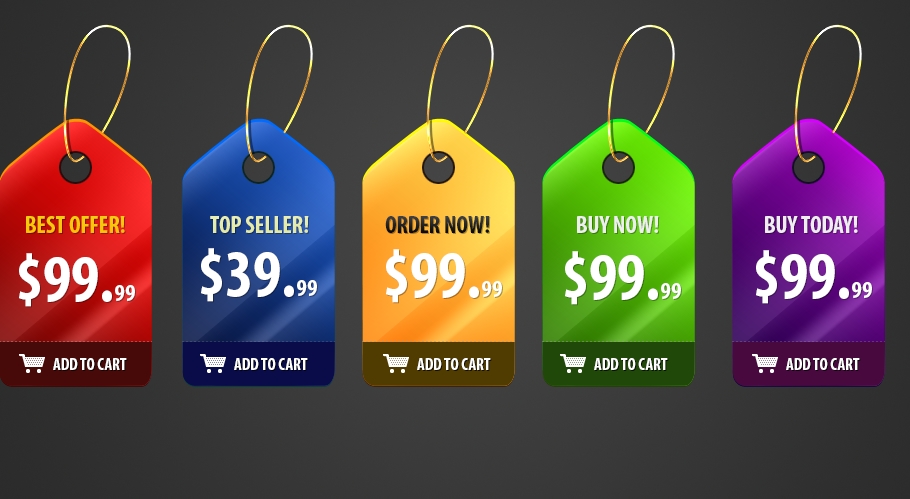Price Strategies For eCommerce
Nail It!
“Is this too much or too little; am I doing it the right way?”, Pricing: a fundamental prerequisite for many purchase decisions can become a daunting task for eCommerce beginners. Starting your online business can sound pretty exciting but same time the pricing process turns out to be a nerve-wracking aspect for many.
A difficult nut to crack since its importance varies as most consumers’ exhibit behaviors on one end of the spectrum (high-average-low). How many customers of each type does your online store attract depends on your store’s pricing position? Especially in eCommerce, pricing plays a major role now given the advent of highly competitive pricing tools and on the other side marketplaces such as eBay and Amazon having the advantage to set the price lower due to their sheer size and yet playing it to their advantage. Aah! Big Data slips in here too.
Based on what industry your online store operates in, there could be different factors affecting your pricing decisions. When it comes to pricing, you just don’t think about the product in hand. What you also consider is what value does the product supply and what is your online business USP (service, shipping, uniqueness,etc.).
The simplest thing could be stepping into your customer's shoes and ask yourself the questions about the product and your store. But, how many customers can you probably enact in your mind? Only a handful, right? And that won’t be enough population to survey unless you have a very high-end product meant for a specific purpose only.
Because you have to be fair to your business and your customers, a good idea is to make some logical moves as a base and then build on it by using your business mind tactics clubbed with intuition.
Five pricing strategies on how price and perception can power your profits.
Know what you stand for!
What is it about you that your customers must know? Why should they choose you and why should they keep coming back to you? To identify what makes your business unique spend a time to uncover what makes your business story remarkable. It’s not easy to come to that one, but a must to stand out in the mushrooming eCommerce industry.
In an eCommerce business, your USP could be free shipping anywhere, a unique product showcase, appealing for a cause or No D.I.Y. Kits No cold scripts.
Your USP serves as your compass and helps you navigate through the constant thought about why you charge, what you charge. Always North!
Market-oriented
The above one is the starting point. When you answer that, it helps you narrow down your competition and you now survey only the target audience. With less legwork, you get more relevant data and here you gauge where you stand alongside the competition. Don’t be afraid of a reality check; it does so much good when the intentions are right! Once you have surveyed and researched your competition, make an overall assessment to judge your pricing move. Do you need to lower or match the price? Or is it your lucky day and the good news is that you have scope to increase the price? This approach is best used when you are a retailer with non-proprietary products, i.e. you do not manufacture or design the product, but you source it and sell to earn a profit margin on that.
Psychological
The basis of psychological pricing is the customer’s perception of the product. Rather than appealing to the rational side of the consumer market, this strategy works around the emotional response to encourage sales.
Use the number 9!
Think about the $0.99 candy bars at the checkout aisle or rows of dresses with $39 tag. The number 9 does an exceptional job at convincing customers that a good deal is up for grabs. MIT and University of Chicago actually conducted a study on effectiveness of number 9 on women’s clothing and one of the findings suggest that customers felt they were getting a great deal on $40 dress whereas buying a $34 dress gave an impression of overspending on a $30 dress; simply because $34 is closer to $30 and $39 closer to $40. In short, a frame of reference is leveraged in psychological pricing.
Another concept of psychological pricing is bundling products. Create package deals where a customer gets, let’s say 3 things while paying for one product (which comes as a package). Think McDonald’s, Think Value Meals!
Discount
Who doesn’t love sales? We all have our favorite seasonal sales that we look forward to all year through. eCommerce majors are known for those festival sales and what does it do exactly? Simple. Increases foot-fall on your online store and ups the revenue. This strategy is not reserved for online marketplaces alone. Any online seller can adopt this strategy to increase traffic to their store or even to quickly move the unsold inventory. However, if used frequently this could give you a reputation of a bargain retailer. Use this to give a flavor to your customers and make them keep coming back. Over a period of time, it may become your online store's custom to offer a genuine discount sale.
Be the Loss Leader
Being a loss leader means selling a product below the market value and still winning. How is that true? Once again, the frame of reference, emotional response teamed with appropriate merchandising strategy. The idea here is to stimulate sales of other more profitable goods. By positioning the pricing correctly in this situation, an online seller draws customers into the store where they are likely to buy other products too. Thus, the product sold below market value encourages customers to purchase more overall while they are already in your online store. One thing leads to another. Sounds familiar? Happens so often with all of us, doesn’t it?
As you gain experience selling online, various aspects become a part of the routine and you learn how to manage it. It is the same thing as learning a new tool or picking up a new skill and then putting it into everyday work practice.
As we have heard and known, the best managers, the applauded leaders, and industry players are the ones who remain dynamic, those who mold to their environment and extract the best. Same is the case of pricing; it needs to be managed, should remain dynamic and just like any other management philosophy, pricing too is an art as well as a science. You may have a formula, but you have to know where and when to use it.





